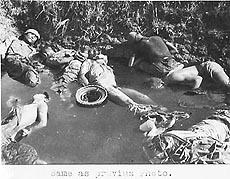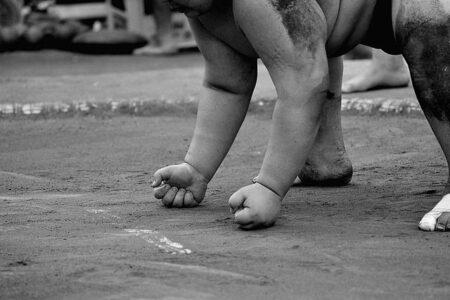The legacy of the Nanjing Massacre continues to cast a long shadow over China-Japan relations nearly eight decades after the atrocity. As one of the darkest chapters of World War II, the brutal killing and widespread atrocities committed by Japanese forces in the Chinese city of Nanjing in 1937 remain a deeply sensitive and contentious issue. This enduring historical wound shapes diplomatic interactions, influences nationalist sentiments, and complicates efforts at reconciliation between the two nations. Our report explores how remembrance, denial, and differing historical narratives surrounding the massacre continue to impact the fragile ties between China and Japan today.
The Lingering Legacy of the Nanjing Massacre on Diplomatic Ties
The Nanjing Massacre remains a deeply sensitive and contentious issue that continues to overshadow diplomatic engagements between China and Japan. Despite numerous bilateral talks and economic partnerships, historical grievances, particularly around how the tragedy is remembered and taught, consistently fuel mistrust and nationalist sentiment on both sides. Japan’s official stance and the reluctance of some political figures to fully acknowledge the extent of wartime atrocities exacerbate tensions, while China often leverages the memory of the massacre to reinforce its national unity and political narrative. This unresolved past impedes efforts to foster genuine reconciliation, keeping diplomatic relations volatile.
Key factors influencing current China-Japan relations include:
- Textbook Controversies: Disputes over how the massacre is portrayed in Japanese school textbooks continue to spark public outrage in China.
- Official Apologies and Denials: Mixed messages from Japanese politicians, ranging from sincere apologies to outright denial, complicate trust-building.
- Memorial Events and Political Symbolism: Public commemorations often see rising nationalist rhetoric, intensifying diplomatic strain.
| Year | Event | Impact on Relations |
|---|---|---|
| 1995 | Kono Statement issued | First official apology acknowledged suffering |
| 2005 | Textbook controversy reignited | Sharp diplomatic protests from China |
| 2015 | 70th Anniversary Statement | Mixed reactions; seen as ambiguous by China |
Historical Narratives and the Battle Over Memory in China and Japan
The profound impact of the Nanjing Massacre continues to shape collective memories and national narratives in both China and Japan. Decades after the atrocity, the event remains a contentious symbol of unresolved historical grievances. China’s portrayal of the massacre emphasizes the scale of Japanese aggression and civilian suffering, reinforcing a narrative of victimhood and resilience that bolsters national identity. Conversely, many in Japan view the event through a lens of contested history, where some officials and textbooks attempt to downplay or reinterpret the extent of the massacre, fueling diplomatic tensions and public outrage from Beijing. This discord highlights how historical narratives are not only reflections of the past but also tools wielded in the present for political leverage.
The battle over memory manifests in various cultural and political arenas, reflected in:
- Education: Divergent textbook treatments in Japan and China shape new generations’ understanding of the war.
- Museum Exhibitions: Memorials like the Nanjing Massacre Memorial Hall emphasize Chinese perspectives, while Japanese counterparts often offer more muted references.
- Diplomatic Rhetoric: Governments periodically invoke the massacre to assert moral authority or criticize historical revisionism.
- Public Sentiment: Grassroots activism and social media debates reveal deep-seated emotions and national pride linked to these memories.
| Aspect | Chinese Narrative | Japanese Perspective |
|---|---|---|
| Casualty Estimates | Approx. 300,000 | Disputed, ranges 40,000-200,000 |
| Textbook Inclusion | Detailed, commemorative | Selective, often minimized |
| Memorials | Extensive, high-profile | Limited, sometimes controversial |
| Diplomatic Impact | Central in bilateral disputes | Source of apology debates |
Building Bridges through Education and Dialogue to Heal Deep Wounds
The legacy of the Nanjing Massacre continues to cast a long shadow over China-Japan relations, underscoring the urgent need for honest reflection and mutual understanding. Efforts to acknowledge historical grievances face frequent setbacks, but the path forward lies in fostering open, respectful dialogue. By embracing education as a bridge rather than a barrier, both nations can work towards healing wounds that history has etched deep into their collective consciousness.
Constructive engagement involves:
- Incorporating multiple perspectives within school curricula to provide balanced historical accounts.
- Establishing forums where survivors, historians, and policymakers can share narratives and confront difficult truths together.
- Promoting cultural exchanges that build empathy beyond the classroom.
| Initiative | Objective | Impact | ||
|---|---|---|---|---|
| Bi-national History Conferences | Shared research and mutual understanding | Reduced mistrust among academics and the public | ||
| Youth Exchange Programs | Hands-on cultural immersion | Empathy development, breaking stereotypes | ||
| Digital Archives of Testimonies | Preservation of first-person accounts | Preservation of first-person accounts | Increased accessibility to authentic historical narratives |
Would you like me to help with any other enhancements, such as improving accessibility, responsiveness, or styling?
To Conclude
The legacy of the Nanjing Massacre continues to cast a long shadow over China-Japan relations, underscoring the enduring impact of history on diplomacy and regional stability. As both nations navigate a complex path toward reconciliation, the unresolved memories of wartime atrocities serve as a poignant reminder of the need for acknowledgment and dialogue. The ongoing discourse surrounding this dark chapter remains central to understanding the broader challenges that define East Asian geopolitics today.




